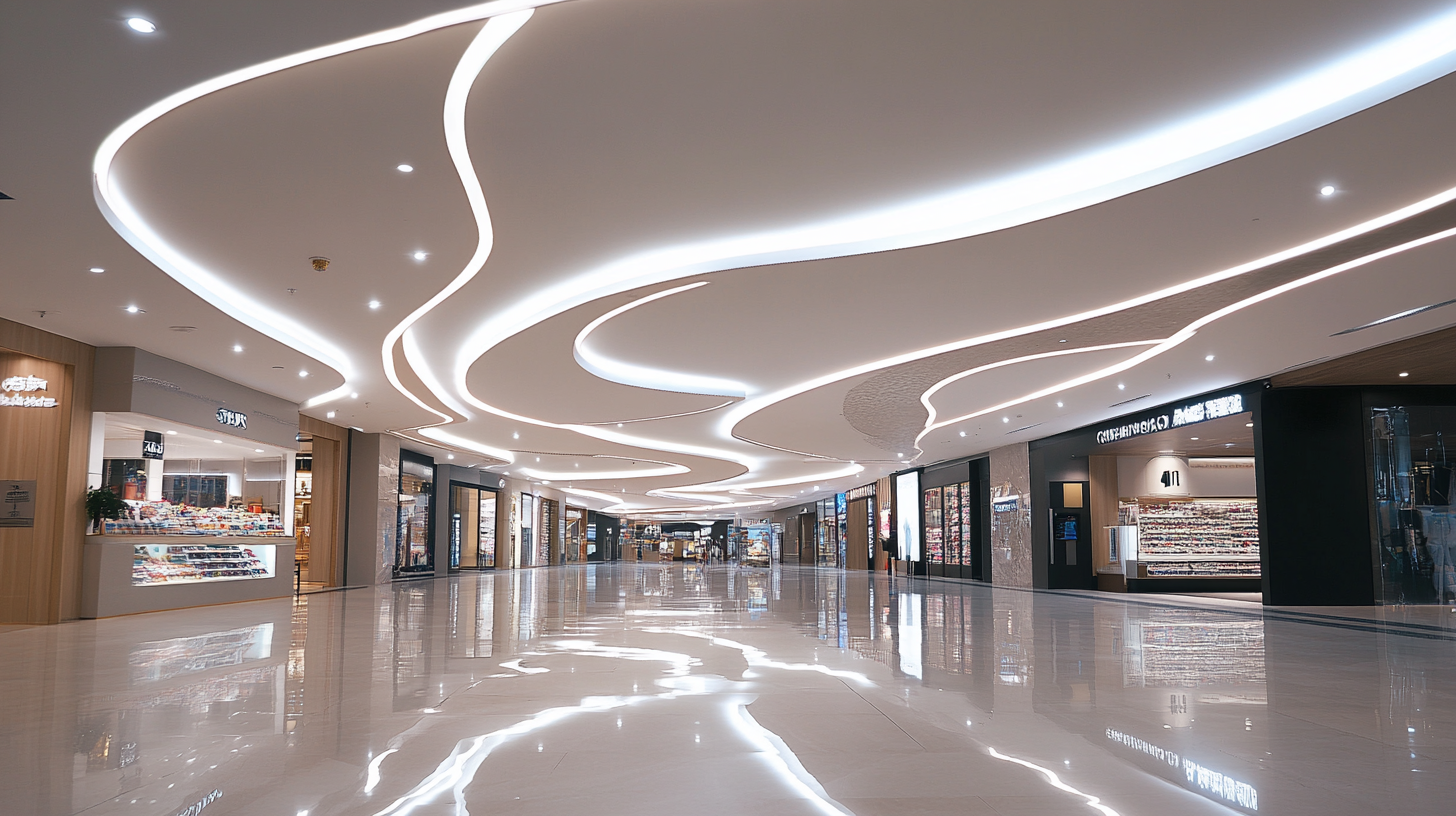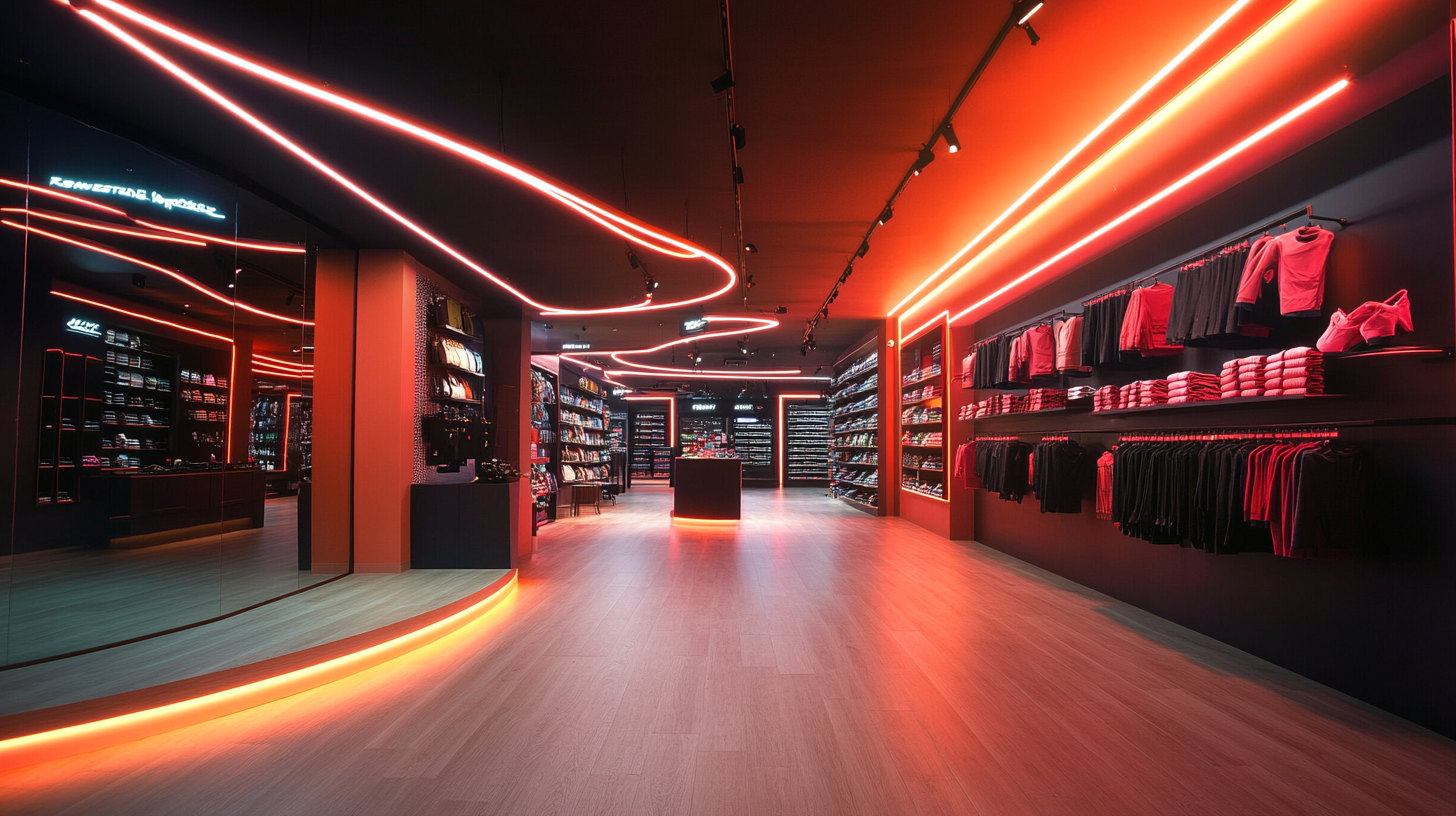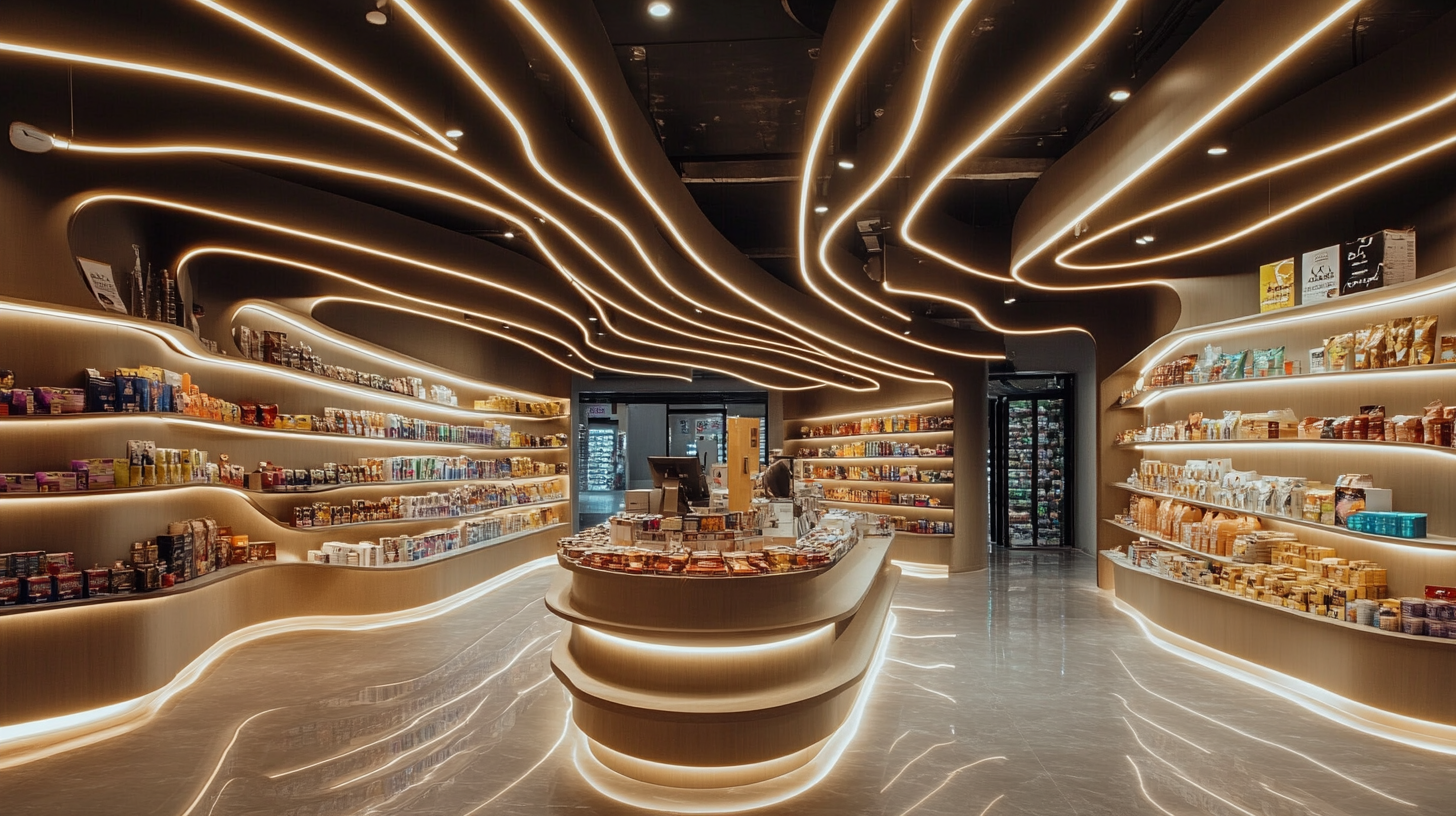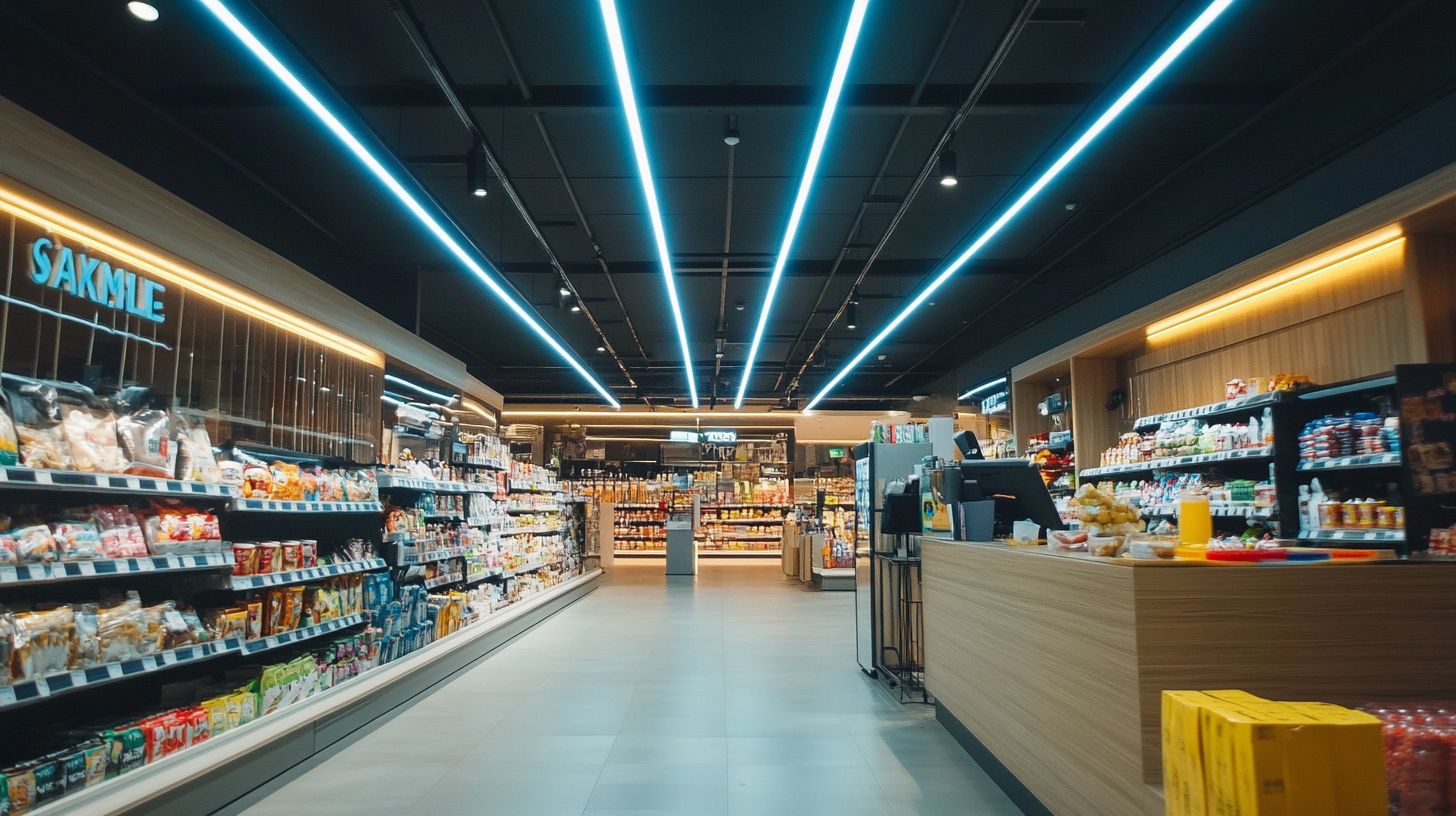Transforming Retail Spaces with Led Flex: Real-World Applications and Practical Installation Tips
As the retail landscape continues to evolve, the integration of innovative lighting solutions has become pivotal in creating engaging consumer experiences. One such solution gaining significant traction is "Led Flex." According to a recent report by MarketsandMarkets, the global market for flexible LED lighting is projected to reach $10.5 billion by 2025, growing at a CAGR of 15.7% from 2020. This surge highlights the importance of versatile lighting systems in retail environments, where aesthetic appeal and functionality must go hand in hand to captivate shoppers and drive sales.
The versatility of Led Flex allows retailers to transform their spaces dynamically, accommodating changing designs and customer preferences with ease. By leveraging techniques such as accent lighting, signage illumination, and display highlights, businesses can create immersive shopping environments that enhance product visibility and customer engagement. A study by The Retail Design Institute illustrates that effectively designed lighting can influence consumer behavior, increasing the likelihood of purchase by up to 75%. With practical installation tips and real-world applications, this blog will explore how retailers can harness the full potential of Led Flex to elevate their spaces and stay ahead in a competitive marketplace.

Innovative Concepts: How LED Flex Redefines Retail Environment Design
In the rapidly evolving landscape of retail, creating an engaging and visually appealing environment is paramount. LED Flex offers innovative solutions that redefine retail space design, enabling brands to transform their storefronts and interiors seamlessly. These flexible LED strips can contour around existing structures, providing dynamic lighting that highlights products in a new light. With the ability to change colors, brightness, and patterns, LED Flex empowers retailers to craft unique atmospheres that resonate with their target audience. One of the standout applications of LED Flex in retail is its ability to enhance customer experience through interactive displays. Stores can utilize programmable LED designs to create captivating visuals that tell a story or convey a brand message. For instance, using LED Flex to create moving graphics can draw in pedestrians and invite customers to explore further. Additionally, incorporating ambient lighting with LED Flex can significantly influence customer mood and purchasing behavior, making it a strategic tool in a retailer's arsenal. Practical installation of LED Flex is also straightforward, allowing retailers to integrate this technology without extensive renovations. Its lightweight and adhesive backing make it easy to attach to various surfaces, ensuring that unique designs can be implemented swiftly. Furthermore, as retailers seek sustainable options, LED Flex stands out due to its energy efficiency and longevity, making it not just a design choice but a smart investment for the future. As the retail environment continues to evolve, embracing innovations like LED Flex will be essential for brands aiming to maintain a competitive edge.

Key Benefits of LED Flex Lighting in Modern Retail Spaces
LED flex lighting is revolutionizing modern retail spaces by offering a versatile and efficient solution for illumination. One of the key benefits of using LED flex lighting is its energy efficiency. Unlike traditional lighting options, LED flex lights consume significantly less power, which translates into lower electricity bills for retailers. Additionally, with a longer lifespan, typically lasting up to 50,000 hours, LED flex lighting reduces the frequency and costs associated with replacements.
Another advantage is the flexibility in design it provides. Retail environments often require creative lighting solutions to enhance product displays and create inviting atmospheres. LED flex lights can be effortlessly shaped and installed in various configurations, allowing retailers to highlight specific areas or products effectively. This adaptability not only accentuates merchandise but also contributes to a unique shopping experience, drawing customers in and encouraging longer visits.
Moreover, the aesthetic appeal of LED flex lighting cannot be overlooked. Available in numerous colors and brightness levels, these lights can set the mood of a retail space, whether it's bright and energetic or soft and soothing. Such customized lighting not only caters to the brand’s identity but also influences consumer behavior, making it a powerful tool in creating a compelling shopping environment. By integrating LED flex lighting, retailers can enhance their visual merchandising while enjoying substantial operational savings.

Step-by-Step Guide to Installing LED Flex for an Effective Retail Ambiance
Creating an inviting retail ambiance can significantly influence customer behavior and enhance their shopping experience. One effective way to achieve this is through the innovative use of LED Flex lighting. This versatile lighting solution not only adds aesthetic appeal but also allows for dynamic customization in retail spaces. In this guide, we will walk through the practical steps for installing LED Flex and optimizing its impact on your store's atmosphere.
To begin with, proper planning and layout are critical for installation. Start by assessing the areas that require illumination, such as product displays, entry points, or specific sections of your store. Consider the desired mood: softer light creates a cozy feel, while brighter light can energize a space. Measure the lengths of the LED Flex needed and ensure you have the necessary tools, including connectors, adhesive, and a power source. Once you have everything prepared, clean the surface where the LED Flex will be installed to ensure proper adhesion.
Next, it’s time to install the LED Flex according to your design. Peel away the adhesive backing and carefully adhere the strips to the predetermined surfaces, ensuring they are straight and aligned. Be cautious around corners—bending LED Flex is simple but requires precision to avoid damaging the strips. Connect the strips to the power supply and test the lighting to ensure it meets your expectations. For added functionality, consider utilizing dimmer switches or smart controls to modify the brightness throughout the day. This step-by-step approach guarantees that your retail space not only stands out but also transforms the overall shopping experience of your customers.

Case Studies: Successful Transformations Using LED Flex in Retail
In recent years, the retail industry has undergone significant transformations, with LED Flex lighting emerging as a key player in enhancing customer experience and store aesthetics. According to a report by the U.S. Department of Energy, LED lighting systems can reduce energy consumption by up to 80% compared to traditional lighting methods. This substantial reduction in energy usage not only lowers costs but also aligns with the growing demand for sustainable business practices among consumers.
One remarkable case study involves a luxury apparel retail brand that utilized LED Flex to revamp its flagship store. By incorporating customized LED strips into display cases and around merchandise, the brand achieved a more dynamic shopping environment that highlighted key items while creating an inviting atmosphere. The retailer reported a 25% increase in foot traffic and a 15% rise in sales over a three-month period, showcasing the potential of strategic lighting in influencing consumer behavior.
Another impressive example can be seen in a high-volume electronics retailer, which integrated LED Flex into its store layout during a recent remodel. This setup allowed for flexible lighting configurations that adapt to seasonal promotions and product launches. The retailer utilized analytics to monitor customer engagement, discovering that certain lighting arrangements led to a 20% improvement in customer dwell time in specific sections of the store. This demonstrates how targeted lighting solutions can optimize space utilization and drive sales in a competitive retail landscape. Such practical applications of LED Flex highlight its versatility and effectiveness in modern retail spaces.
Future Trends: The Evolution of Retail Spaces with LED Flex Technology
As LED flex technology continues to advance, the retail landscape is poised for a major transformation. This flexible lighting solution not only enhances the aesthetic appeal of retail spaces but also plays a crucial role in the digitalization of customer experiences. With shopping centers increasingly integrating immersive technologies like augmented reality, LED flex installations can elevate the sensory journey, ensuring that merchandise is showcased in a dynamic and engaging manner.
The evolution of retail spaces driven by LED flex technology reflects a broader trend towards experiential shopping. Retailers are reimagining their environments to create spaces that resonate with consumers on multiple levels. These innovative lighting solutions can be adapted for various purposes, from highlighting product displays to creating themed atmospheres that change with seasons or promotions. By embracing such versatility, retailers can attract foot traffic and foster deeper connections with shoppers.
Moreover, the future of malls doesn't solely rely on traditional shopping; rather, it hinges on embracing experiences that engage visitors. Curated events, pop-up shops, and immersive installations powered by flexible LED systems provide opportunities for storytelling and brand engagement. As consumer preferences shift towards unique experiences, LED flex technology will be essential in transforming retail spaces into vibrant hubs of interaction and community, paving the way for a new era in shopping.

